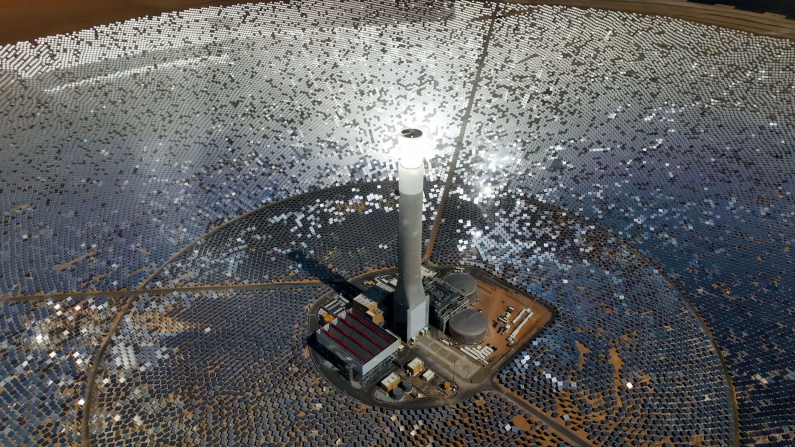
Deputy Prime Minister of the UAE and Chairman of the Board of Ministers, Sheikh Mohammed bin Rashid, inaugurated the world’s largest concentrated solar power project, marking the fourth phase of the “Mohammed bin Rashid Al Maktoum Solar Energy Complex” in Dubai. The project, developed in partnership with Saudi Arabia and China, underscores the UAE’s commitment to sustainability and innovative clean energy projects.
During the inauguration ceremony, Sheikh Mohammed bin Rashid stated, “The UAE embraces a clear vision and specific goals to become one of the world’s most sustainable countries, evident in launching qualitative clean and renewable energy projects with innovative solutions integrated into various economic sectors. The solar energy complex reflects our commitment to establish a globally competitive infrastructure that achieves sustainability goals and lays a solid foundation for an environmentally friendly future.”
The fourth phase of the Mohammed bin Rashid Al Maktoum Solar Energy Complex, with a production capacity of 950 megawatts, is the largest investment project utilizing three common technologies for clean energy production. These include a total of 600 megawatts of equivalent-cutting heliostats, a 100-megawatt concentrated solar power tower, and 250 megawatts of photovoltaic solar panels. The project boasts an investment of AED 15.78 billion under the independent power producer model.
The project features the world’s tallest concentrated solar power tower, standing at 263.126 meters, and the largest thermal energy storage capacity of 5.907 gigawatt-hours, according to the Guinness World Records.
Saeed Mohammed Al Tayer, CEO of the Dubai Electricity and Water Authority (DEWA), highlighted that the fourth phase spans an area of 44 square kilometers and utilizes 70,000 heliostats that track the sun’s movement. The solar receiver atop the tower, the heart of the station, absorbs sunlight, converting it into thermal energy. It contains over 1,000 thin-tube thicknesses to absorb and transmit sunlight to molten salt inside these tubes.
The project will provide clean and sustainable energy to approximately 320,000 residences, reducing carbon emissions by around 1.6 million tons annually. This further solidifies Dubai’s role as a global leader in clean and renewable energy and climate action.
Al Tayer stated, “The Mohammed bin Rashid Al Maktoum Solar Energy Complex projects, with its current production capacity of 2,627 megawatts, form the basis for achieving Dubai’s Clean Energy Strategy 2050 and the emirate’s carbon neutrality strategy to provide 100% of the energy production capacity from clean energy sources by 2050.”
Mohammed Abu Nayyan, Founder and Chairman of Acwa Power, emphasized Dubai’s commitment to a sustainable future, saying, “Together, we have set new standards in concentrated solar power generation by using the latest technological innovations in this project. It includes the concentrated solar power tower and equivalent-cutting panels that operate with concentrated solar power to produce energy 24 hours a day, in addition to enhancing the station’s capacity with photovoltaic panels to produce 950 megawatts. It is the only project that incorporates all these technologies in one location with the world’s largest solar energy storage capacity.”
Zhu Jun, Chairwoman of the Silk Road Fund, noted, “Through collaboration and innovation, we pave the way for sustainable energy solutions that transcend borders and drive progress. As we celebrate the opening of Noor Energy 1, we reaffirm our commitment to building a brighter future for future generations.”
The fourth phase of the Mohammed bin Rashid Al Maktoum Solar Energy Complex employs three common technologies for clean energy production: a total of 600 megawatts of equivalent-cutting heliostats, a 100-megawatt concentrated solar power tower (using molten salt technology), and 250 megawatts of photovoltaic solar panels.
The project uses 70,000 tracking heliostats. The solar receiver at the top of the tower converts sunlight into thermal energy and contains over 1,000 thin tubes to absorb and transmit sunlight to molten salt.
Leave a Reply